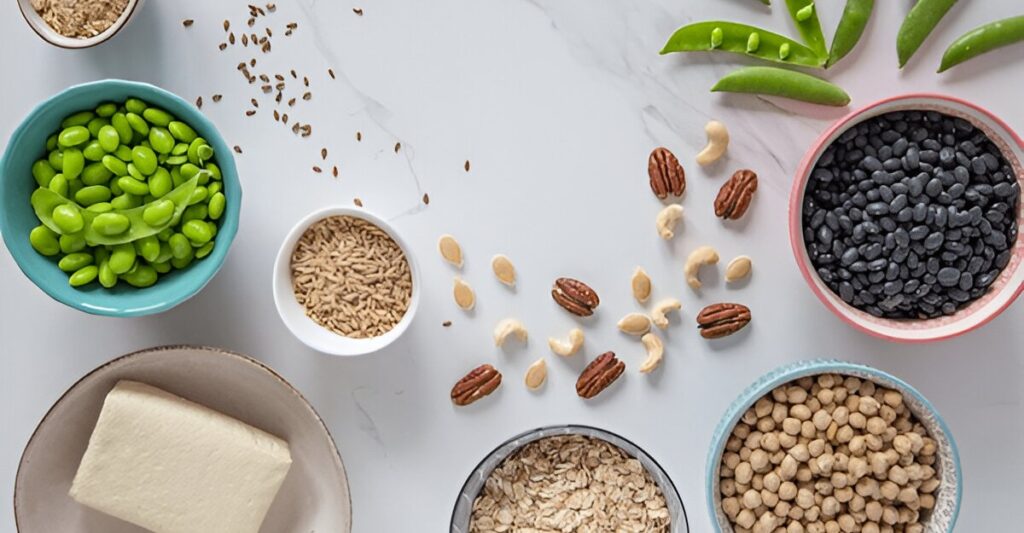Keeping track of what you eat can be a game-changer for your health, whether you’re aiming to lose weight, improve your energy, or understand your eating habits better. A food journal is a powerful tool to gain insight into your diet and make informed choices. But where do you begin? Starting a food journal is easier than you think, and it can set you on the path to achieving your wellness goals. In this article, we’ll guide you through how to start a food journal, why it’s beneficial, and tips to make it a sustainable habit.
What Is a Food Journal?
A food journal is a record of everything you eat and drink over a period of time. It can be as simple as a notebook where you jot down meals or as detailed as a digital app that tracks calories, nutrients, and more. The goal of starting a food journal is to increase awareness of your eating patterns, identify areas for improvement, and align your diet with your health objectives.
Why Start a Food Journal?
Before diving into how to start a food journal, let’s explore why it’s worth your time. Food journaling offers numerous benefits that can transform your relationship with food:
- Increases Awareness: Writing down what you eat helps you notice habits, like mindless snacking or skipping meals, that you might otherwise overlook.
- Supports Weight Management: Studies show that people who keep food journals are more likely to lose weight and maintain it by staying accountable.
- Identifies Triggers: A food journal can reveal connections between what you eat and how you feel, such as foods that cause bloating or fatigue.
- Improves Nutrition: Tracking your intake encourages you to choose nutrient-dense foods and balance macronutrients like proteins, carbs, and fats.
- Boosts Accountability: A food journal keeps you honest about your choices, making it easier to stick to your goals.
With these benefits in mind, let’s walk through the steps to start a food journal and make it work for you.
How to Start a Food Journal: Step-by-Step Guide
Starting a food journal doesn’t require fancy tools or a nutrition degree. Follow these simple steps to begin tracking your food and building a healthier lifestyle.
1. Choose Your Journal Format
The first step in how to start a food journal is deciding how you’ll record your entries. There are several options to suit different preferences:
- Paper Journal: Use a notebook or a pre-designed food journal template. This is great for those who enjoy writing by hand and want a tangible record.
- Digital Apps: Apps like MyFitnessPal, Cronometer, or Lose It! offer features like calorie tracking, barcode scanning, and nutrient breakdowns.
- Spreadsheets: Create a custom spreadsheet in Google Sheets or Excel for a flexible, tech-savvy approach.
- Notes App: Use the notes app on your phone for a quick, no-frills option.
Choose a format that feels convenient and aligns with your lifestyle. The easier it is to use, the more likely you’ll stick with it.
2. Decide What to Track
A food journal can be as basic or detailed as you want. At a minimum, record what you eat and drink, including portion sizes and meal times. To gain deeper insights, consider tracking:
- Macronutrients: Note the protein, carbs, and fats in each meal to ensure balance.
- Calories: Track calories if weight loss or gain is your goal.
- Hunger and Fullness: Rate your hunger before and after eating to understand your appetite cues.
- Mood and Energy: Log how you feel after meals to identify foods that energize or sluggish you.
- Context: Include where you ate, who you were with, and your emotions to spot patterns like stress eating.
When starting a food journal, begin with the basics and add more details as you get comfortable.
3. Be Consistent and Honest
Consistency is key when you start a food journal. Aim to log every meal, snack, and beverage as soon as possible to ensure accuracy. Waiting until the end of the day can lead to forgotten details. Be honest about what you eat—even those “cheat” snacks or extra bites. The goal isn’t to judge yourself but to understand your habits.
To stay consistent, set a routine, like logging meals right after eating or at set times (e.g., morning, midday, evening). Over time, journaling will become second nature.
4. Estimate Portion Sizes
Accurate portion sizes help you get a clear picture of your intake. If you’re not ready to weigh or measure food, use visual cues:
- A fist is about 1 cup (e.g., for veggies or grains).
- A palm is roughly 3–4 ounces (e.g., for meat or fish).
- A thumb is about 1 tablespoon (e.g., for oils or nut butter).
For packaged foods, check nutrition labels for serving sizes. As you start a food journal, these estimates will improve your awareness of portions.
5. Review and Reflect
At the end of each week, take time to review your food journal. Look for patterns, such as:
- Are you eating enough fruits and vegetables?
- Do certain foods leave you feeling tired or bloated?
- Are you skipping meals or overeating at certain times?
Use these insights to make small, sustainable changes, like adding more protein to breakfast or cutting back on sugary drinks. Reflection is a critical part of how to start a food journal and make it a tool for growth.
Tips for Food Journaling Success
To make your food journal a lasting habit, try these practical tips:
- Keep It Simple: Don’t overwhelm yourself with too many details at first. Start with basic food and drink logs and expand as needed.
- Use Technology: Apps can simplify tracking by calculating nutrients or scanning barcodes. Many also sync with fitness trackers for a holistic view.
- Make It Enjoyable: Personalize your journal with colorful pens, stickers, or a fun app interface to stay motivated.
- Set Goals: Define why you’re starting a food journal—weight loss, better energy, or balanced nutrition—and let those goals guide your tracking.
- Be Kind to Yourself: Avoid using your journal to shame yourself for “bad” choices. Focus on progress, not perfection.
Common Mistakes to Avoid
When you start a food journal, it’s easy to fall into traps that can derail your efforts. Here’s how to avoid them:
- Inconsistent Logging: Missing entries reduces the journal’s effectiveness. Set reminders to log meals until it’s a habit.
- Obsessing Over Details: Tracking every calorie or gram can lead to burnout. Focus on trends rather than perfection.
- Ignoring Context: Food isn’t just about nutrients. Note emotional or environmental factors to understand your eating triggers.
- Not Reviewing: Logging without reflecting misses the point. Regularly review your journal to gain insights and adjust.
How a Food Journal Fits Into a Healthy Lifestyle
Starting a food journal is just one piece of the wellness puzzle. Pair it with other healthy habits, like:
- Balanced Eating: Use your journal to ensure you’re getting enough protein, healthy fats, and complex carbs.
- Regular Exercise: Track how your diet fuels your workouts and recovery.
- Mindful Eating: Combine journaling with mindful eating practices, like savoring meals without distractions.
- Adequate Sleep and Hydration: Note water intake and sleep patterns in your journal to see their impact on your eating habits.
Conclusion
Learning how to start a food journal is a simple yet powerful step toward better health. By tracking what you eat, you’ll gain clarity on your habits, make smarter choices, and move closer to your wellness goals. Whether you use a notebook, an app, or a spreadsheet, the key is consistency, honesty, and reflection. Start your food journal today, and discover how this small habit can lead to big changes in your health and happiness. Here’s to eating smarter and living better!


